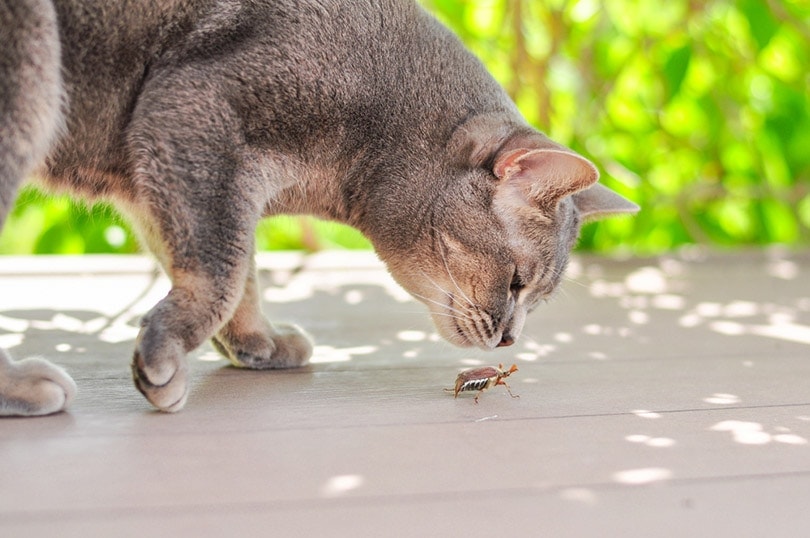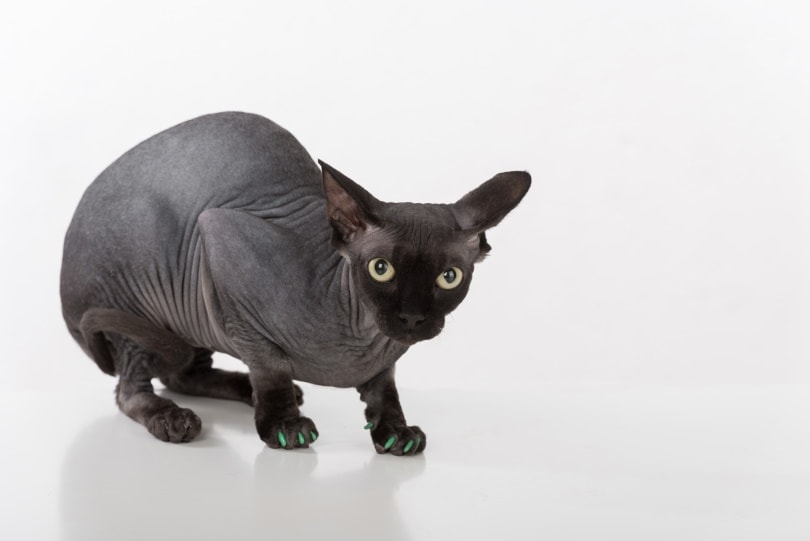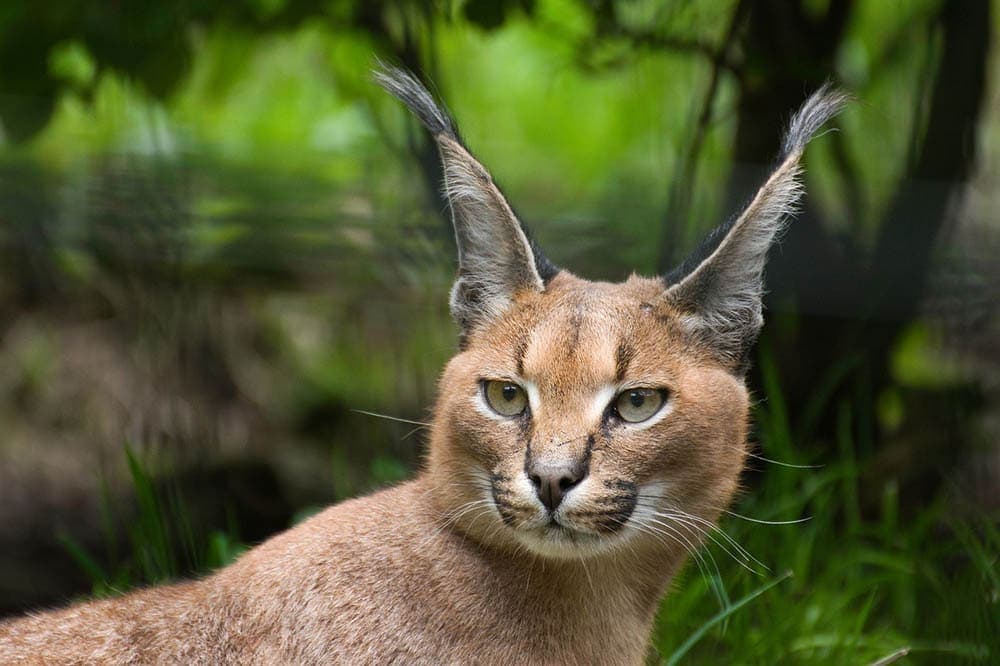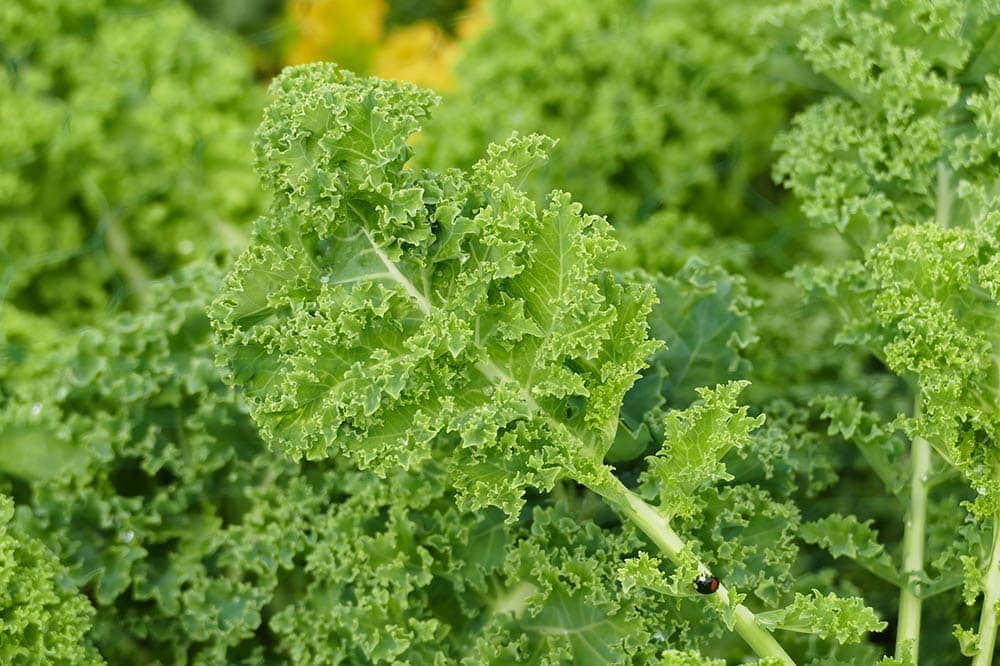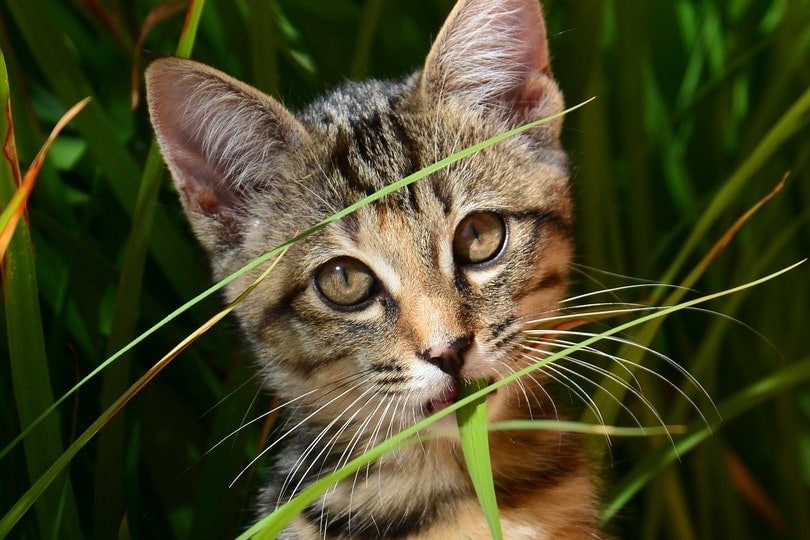Just the thought of bugs and insects may make your skin crawl. But cats, however, love to chase, catch, and sometimes eat this creepy crawlies. In the wild, bugs and insects form part of a cat’s diet, along with small mammals, birds, amphibians, and reptiles. A study in the British Journal of Nutrition looked at the dietary profile of feral cats around the world and found that bugs and insects make up 1.2% of a feral cat’s diet. Our well-fed domestic cats probably don’t hunt bugs and insects for their nutritional value, but rather because these creatures bring out a cat’s hunting instincts.
Killer Instincts
Cats are predators, which means that, in the wild, they hunt for food. Small prey appeals to cats as cats are solitary hunters and their prey has to be small enough to catch alone. Due to the small size of its prey, a cat would need to make several kills throughout the day to meet its daily nutritional and energy requirements. Experts have estimated a cat has to eat 10 mice per day to meet its daily energy requirements. In the wild, if a cat only hunted when it was hungry, it would run the risk of starving as prey is not always readily available, and not every hunt ends in a successful kill. It is estimated that less than 50% of a cat’s hunting attempts are actually successful. Hunting is therefore not always motivated by hunger. If an opportunity for hunting presents itself, a cat will take it, regardless of whether it is hungry or not at the time. This opportunistic hunting instinct remains strong in our domesticated felines and the sight of bugs and insects triggers predatory behavior even in well-fed cats.
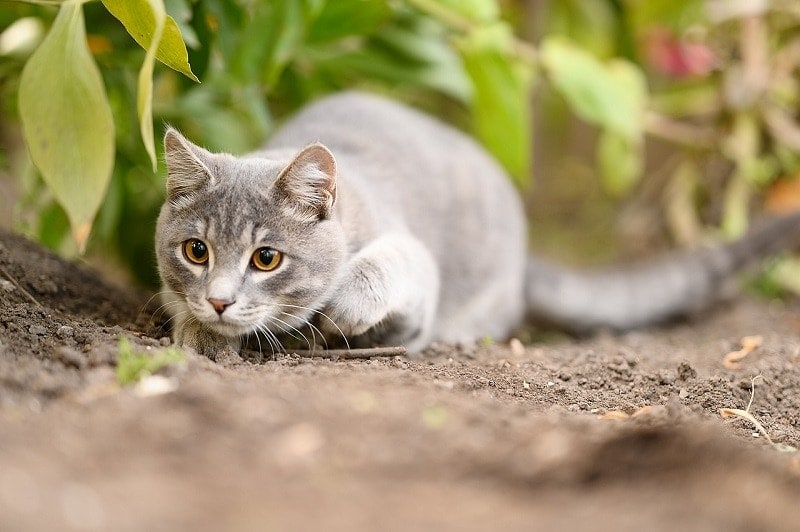
Is It Healthy for My Cat to Eat Bugs And Insects?
Most common bugs and insects are harmless and unless a cat eats a poisonous bug or insect, this bug-eating behavior shouldn’t be an issue. It is perfectly safe for your cat to play with insects such as moths, butterflies, crickets, and flies. Some common bugs and insects that can pose a problem if ingested include poisonous spiders, stinging insects such as bees, wasps, and fire ants, and poisonous caterpillars.
Spiders & Stinging Insects
Most spiders are not poisonous to cats but there are some exceptions such as the black widow spider and brown recluse spider. A bite from a black widow spider can cause severe pain, vomiting and diarrhea, tremors, paralysis, and even death. A brown recluse spider’s bite will cause the tissue in the affected area to die off, but the venom can also cause the destruction of red blood cells, kidney failure, and death. Immediate veterinary attention is required if your cat is bitten by a poisonous spider.
Stinging insects such as bees, wasps, and fire ants deliver painful stings that cause swelling and inflammation in the affected area. It is possible for a cat to be allergic to these insects and to have an anaphylactic reaction. If your cat’s face or tongue starts swelling up or if it has problems breathing, you should seek urgent veterinary attention.
If ingested, poisonous caterpillars can cause drooling, gastrointestinal upset, head shaking, and pawing due to oral discomfort.
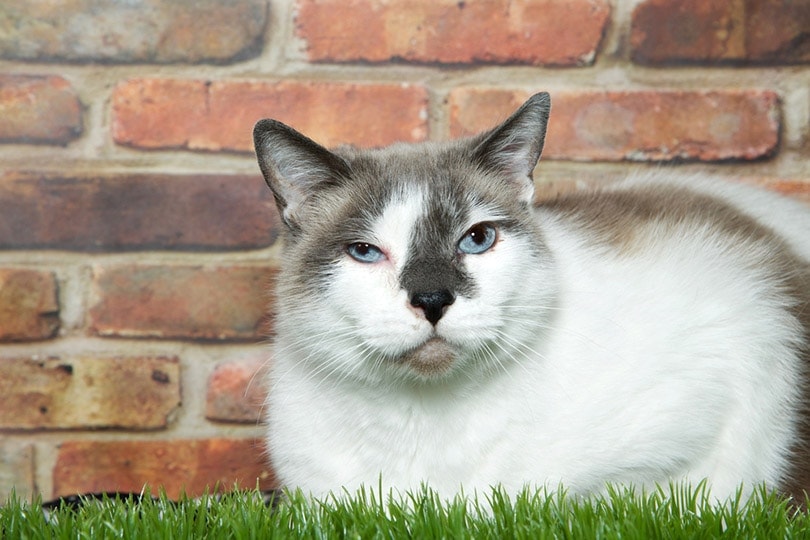
Using Insect Repellant
Remember to only use pet-friendly insect repellent around the home as insects poisoned by pesticides may in turn poison your cat if ingested. Pesticide ingestion can cause labored breathing, drooling, vomiting, fever, seizures, and tremors and requires immediate veterinary attention.
The Nutritional Value of Bugs & Insects
Even though domesticated cats that are fed a commercial diet probably don’t hunt and consume bugs and insects for their nutritional value, bugs and insects are still excellent sources of protein, essential fatty acids, vitamins and minerals. A bug or insect’s nutritional value per pound closely resembles that of other commonly hunted prey such as rats, mice, birds, reptiles, and amphibians. The average cat is unlikely to consume enough insects to contribute significantly to its daily nutritional and energy requirements, so there’s no need to worry about over-feeding if your cat does like to hunt bugs.
The nutritional value of bugs and insects has not gone unnoticed — pet food manufacturers have started producing cat food using insects as the primary protein source. Aside from its nutritional benefit, insect protein provides a more environmentally-friendly alternative to the ingredients found in traditional pet food.
Insect production requires substantially fewer resources such as land and water, and produces much less waste and emissions, compared to traditional livestock production. For example, the carbon footprint of insect protein is less than 20% than that of chicken. Insects raised for protein can also be fed by-products from human food that would otherwise go to waste.
Insect-based cat food may be suitable for cats diagnosed with food intolerances or allergies, as insects are considered to be a novel protein. A “novel” or “new” protein is a protein that a cat has not eaten before. This reduces the risk of an adverse reaction to the food.
In Summary
Stalking, catching, and eating bugs and insects makes a cat’s life much more interesting and provides an outlet for a cat to express its natural predatory behavior. This is beneficial to a cat’s psychological and emotional well-being. Bugs and insects are also excellent sources of protein and other nutrients, although the average pet cat is unlikely to consume enough bugs and insects to make a meaningful contribution to its daily nutritional and energy requirements. Don’t discourage this bug-eating behavior unless your cat is trying to catch a poisonous bug or insect.
Featured Image Credit: Olena F, Shutterstock

